Cheese Choices for Emergency Prepping
While you’re considering what to prep for emergencies, having a well-prepared and stocked food supply is more important than anyone might realize. While non-perishable items like canned goods and freeze-dried meals often top the list, it’s essential not to overlook the value of cheese.
Packed with protein, fat, and flavor, cheese can be an amazing addition to your emergency prepping strategy. If you love cheese as much as I do, then check out these cheese choices for emergency prepping.
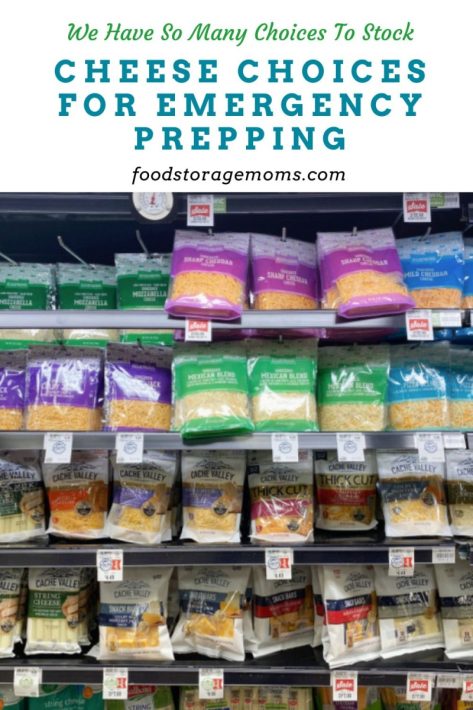
Cheese Slicers or Cheese Boards and BEGA Cheese
1. Hard Cheeses
Hard cheeses are excellent choices for emergency prepping due to their low moisture content, which helps inhibit bacterial growth and extend their shelf life. Parmesan, aged cheddar, Gouda, and Swiss are prime examples. These cheeses can last for months if stored properly. Please note a long shelf life only applies if you refrigerate them or freeze the excess.
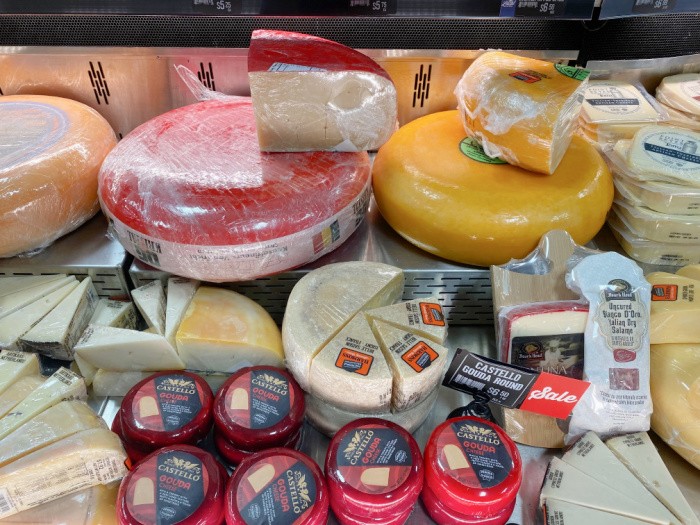
Parmesan
Known for its robust flavor and granular texture, its low moisture content and high salt concentration contribute to its resilience, making it a smart choice for emergency prepping. Grate it over pasta, rice, or soups to add a burst of savory goodness. 10 Meals to Make When You’re Low on Food Please grate and freeze it since it may go bad otherwise.
Aged Cheddar
Aged cheddar cheese is another durable option. The aging process removes moisture, resulting in a cheese that can withstand fluctuations in temperature. Its sharp and tangy flavor can elevate the taste of various dishes. Consider vacuum-sealing blocks of aged cheddar for extended shelf life. It must be refrigerated or frozen.
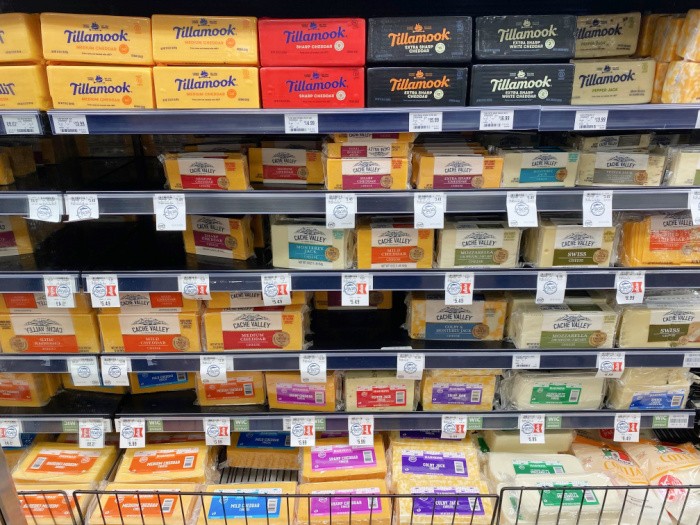
Gouda
Gouda is a versatile cheese with a mild, nutty taste. The wax coating on some Gouda varieties helps protect the cheese from external elements, making it a resilient choice for emergency storage. Enjoy Gouda on its own or melted in a comforting bowl of soup.
Swiss
With its characteristic holes and nutty flavor, Swiss cheese is a favorite for many. It has a firm texture and a lower moisture content making it a reliable option for emergency prepping. Add slices of Swiss to crackers or melt it into a fondue for a comforting and hearty meal.
2. Wax-Coated Cheeses: A Protective Shield
Cheeses encased in the wax are particularly suitable for emergency prepping, as the wax provides an additional layer of protection against moisture and contaminants. These cheeses often come in compact forms, making them easy to store and transport. Please note, in my Master Canning and Preserving classes they suggested it is not safe to wax your own cheese you buy at the grocery store.
Babybel
Babybel, those iconic mini wheels of cheese encased in red wax, is not just a lunchbox favorite but also an excellent choice for emergency prepping. The wax coating ensures a longer shelf life, and the small individual portions are convenient for rationing and snacking.
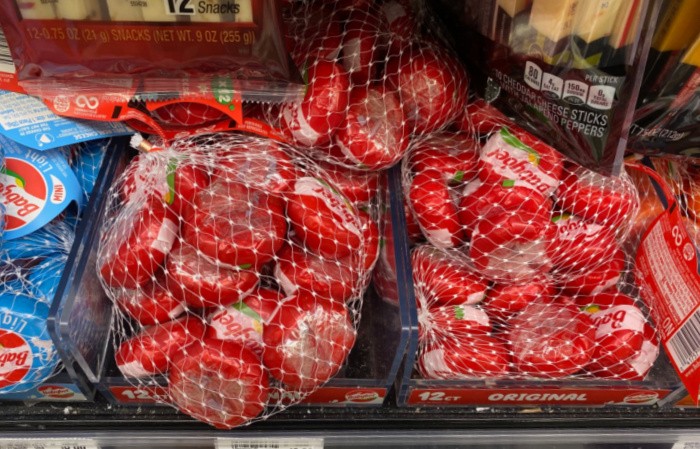
Gouda with Wax Coating
In addition to traditional Gouda, some varieties come with a wax coating that acts as a barrier against external factors. This protective layer enhances the cheese’s resilience, making it a practical option for emergencies. I still store it in the refrigerator.
3. Processed Cheese: The Shelf-Stable Staple
While not the first choice for cheese enthusiasts, processed cheese has its merits when it comes to emergency prepping. Its long shelf life and resistance to spoiling make it a convenient and reliable option for stockpiling. While not designed as a long-term food storage item like canned fruits, vegetables, and meats, it lasts longer than many food items, including fresh cheese choices.
Velveeta
Velveeta, a processed cheese product, has a smooth texture and a mild flavor. Its shelf-stable nature and resistance to separation make it suitable for long-term storage. Use it to make creamy cheese sauce, macaroni and cheese, often referred to as MAC and cheese, or grilled sandwiches during emergencies.
My husband tells me that Velveeta was his cheese of choice when he was young and fishing at the local fishing hole. This cheese clung to the three-pronged hook when rolled into a ball, even when casting long distances.
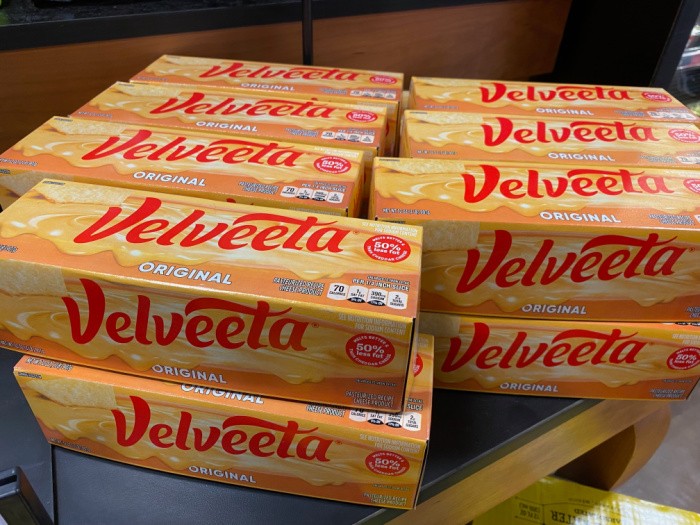
Cheese Spreads
Cheese spreads, available in various flavors, are another processed option that can last for an extended period. These spreads often come in jars, adding to their convenience for emergency prepping. Spread them on crackers or use them as one of your flavorful dips.
4. Vacuum-Sealed Cheese: Preserving Freshness
Vacuum-sealing is a highly effective method for extending the shelf life of cheese. After opening, when you remove the air and then seal the cheese in airtight packaging, the risk of oxidation and spoilage is significantly reduced. Place the cheese back in the refrigerator after use.
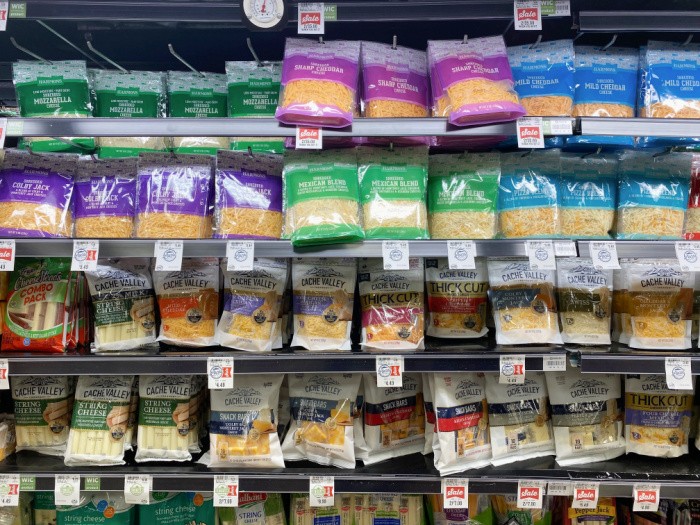
Mozzarella
Mozzarella, a cheese known for its melt-in-the-mouth texture, can be vacuum-sealed to preserve its freshness. This method is particularly useful for shredded mozzarella, a versatile option for pizzas, casseroles, and other emergency-friendly dishes. Tortilla Pizza For Two I freeze my Mozzarella and pull out what I need for a recipe.
Blue Cheese
Blue cheeses, such as Roquefort or Gorgonzola, can be vacuum-sealed to maintain their distinctive flavors. The intense taste of blue cheese can add depth to salads, sauces, or even emergency gourmet meals when stored properly in the refrigerator.
Blended Cheese
If you were to check what we have in our cheese drawer in the fridge right now, you’d find a sealed bag of blended cheese. There are other choices, but my favorite blend is from Costco and is called Mexican-style blend Cheese. It is a shredded cheese that includes Monterey Jack, Medium Cheddar, Queso Quesadilla, and Asadero cheeses. We top off our salads with this cheese at almost every meal.
5. Shelf-Stable Cheese Products
Some cheeses are specifically designed for long shelf life, making them ideal for emergency prepping. These products often come in vacuum-sealed or aseptic packaging, ensuring they remain fresh without the need for refrigeration. 11 Things Every Pantry Needs To Cook From Scratch I know several companies sell freeze-dried cheese. I have several different kinds on my pantry shelves. Freeze-Dried Cheese Please note some are very expensive, but so are most groceries right now.
String Cheese
String cheese, a popular snack among children and adults, is often individually wrapped and vacuum-sealed. Its low moisture content and convenient packaging make it a suitable choice for emergency kits or on-the-go snacking. Grocery Shopping on a Shoestring Budget It’s a great snack to have in your refrigerator.
Processed Cheese Slices
Individually wrapped processed cheese slices are designed for extended shelf life. These slices are convenient for making quick sandwiches or adding a creamy touch to various emergency meals. I know it has some ingredients in it that some deem to be unhealthy, but I grew up on it and it makes the best grilled cheese sandwiches because they melt so easily.
Is cheese a healthy food?
Since cheese is made from milk, some people feel it isn’t healthy. Truth be known, cheese includes many vitamins and minerals, the essential nutrients we all need to maintain healthy bones and muscles. Preppers are known for their desire to store items that provide the nutrition we need in good times and bad. Dairy products are known to have vitamin D and calcium, both vital for good bone health.
As with all foods, cheese should be consumed in moderation and not in excess.
Should I also store cream cheese?
I always have some cream cheese in a two-pack in the refrigerator. Just last week, I made one of my favorite recipes for dinner using cream cheese. I call it cheezy potatoes, but around here most cooks all it funeral potatoes. It is sure to be a hit every time I make it, and we seldom have any leftovers. You can also mix it with cooked hamburger as a dip with crackers.
More Tips
Final Word
In times of emergency, and for everyday meal preparation, who doesn’t love cheese sauce spread over vegetables, cheese topping with chili or spaghetti, or even popcorn? Having various cheese options in your prepping supplies can enhance your meals. From hard cheeses with extended shelf lives to wax-coated and vacuum-sealed varieties, the cheese world offers a range of choices for every prepper. May God Bless this World, Linda

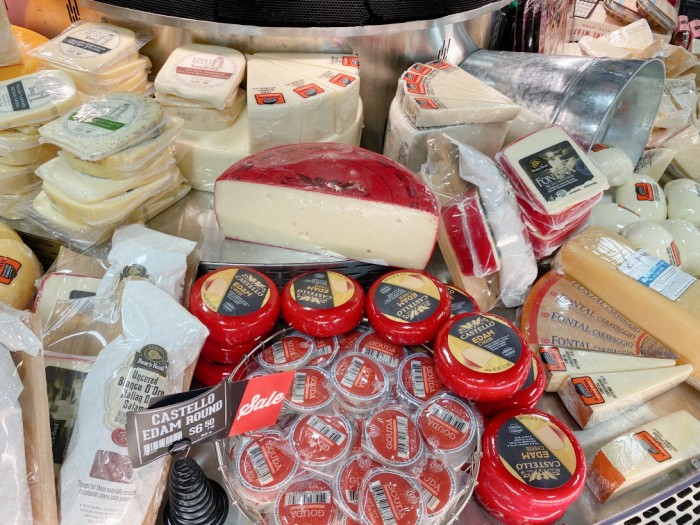

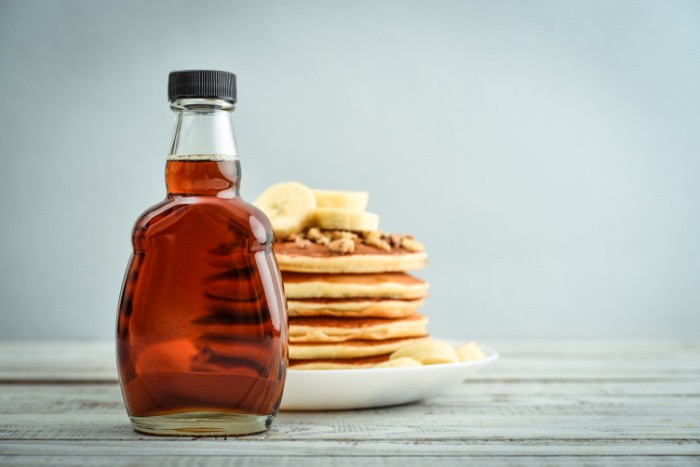

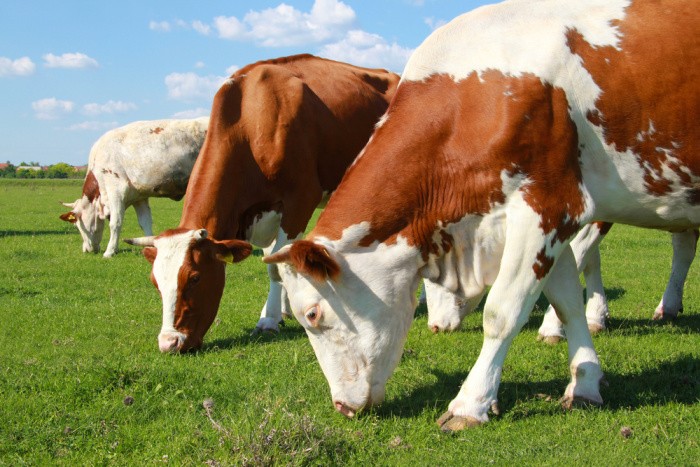
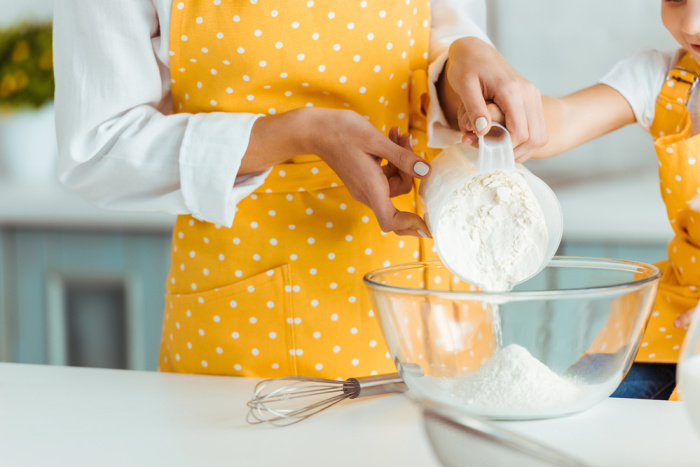
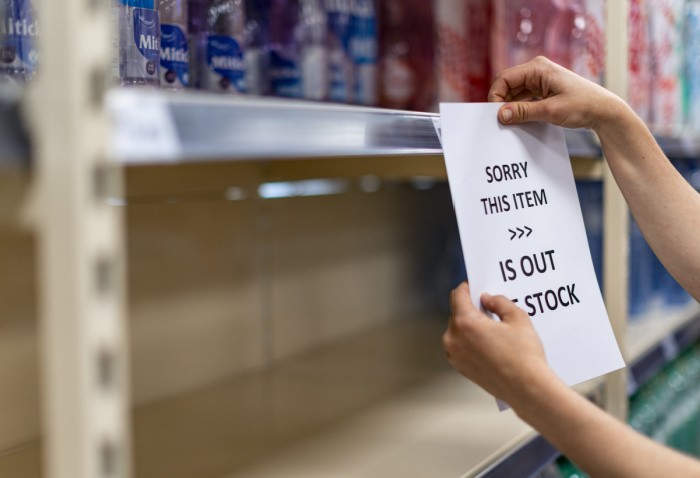
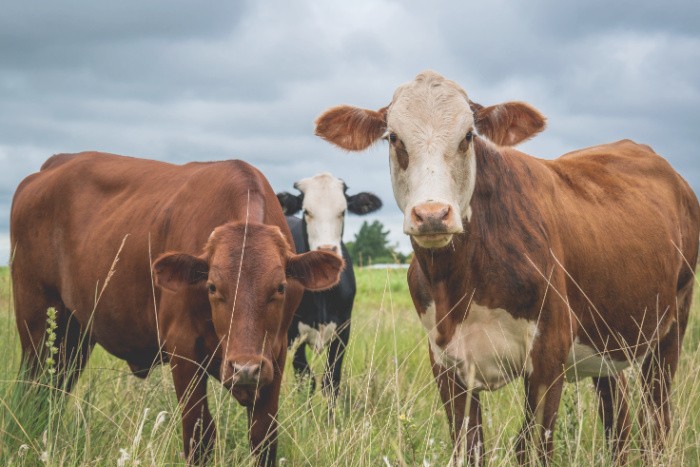
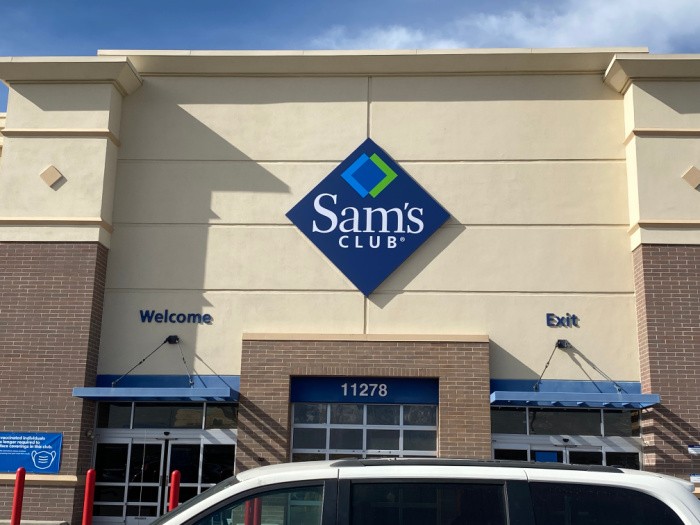
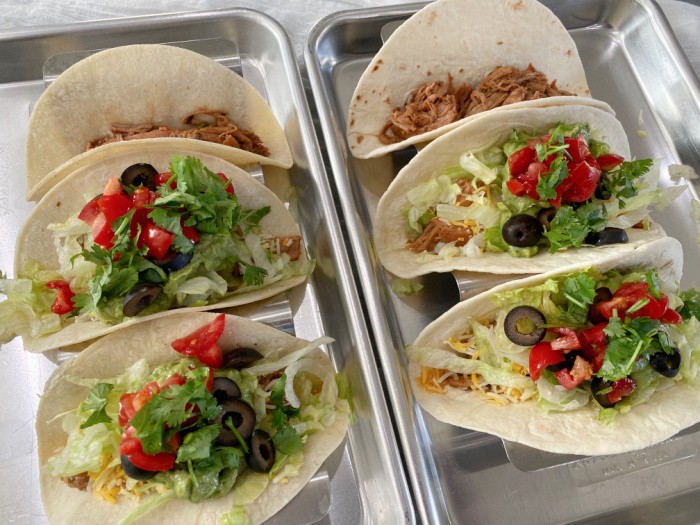

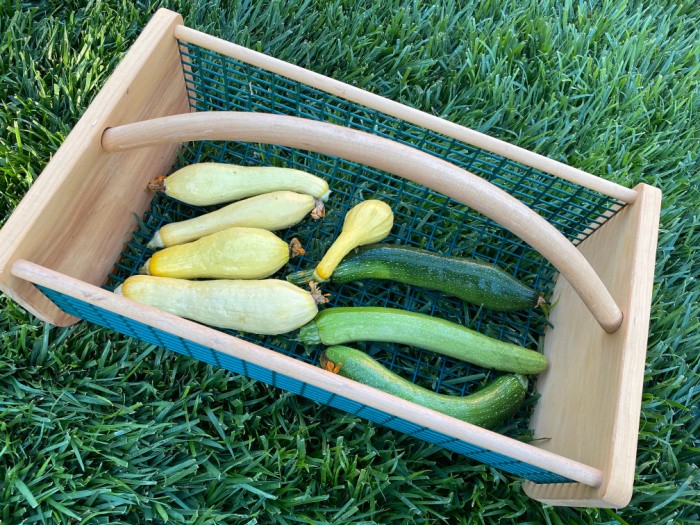
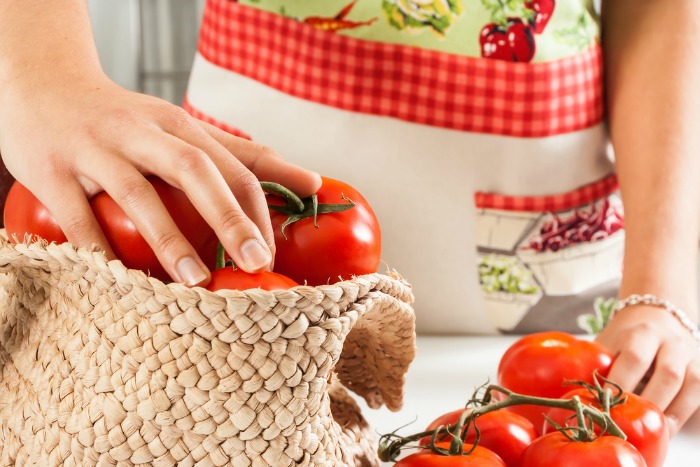








Little cheese on a treble can make for a good day on cats if ya find the right hole. Them yellow belly pond mud cats like it too.
Cheese gone too moldy makes good in the compost too
HI Matt, oh my gosh, I had to Google “yellow belly pond mud cats”! They are fish, I learn something new every single day! Now I have the giggles, I thought they were cats! LOL! Great tip to add moldy cheese to the compost pile! Linda
Catfishing is about knowing the varieties. Channel n yellowbelly will eat the cheese and other smell baits. Flatheads only eat live bait. Blues are a bit of both but prefer minnows n shad.
Folks just think they are bottom feeders and even those aren’t truly bottom feeders. You’ll do better setting that bait bout 1 foot off the bottom where they swim.
HI Matt, now here’s a man who knows how to fish, way to go Matt! Everyone need to take notes! Great tips, Linda
I love cheese but unfortunately, cheese doesn’t always like me!! I am not “very” lactose intolerant, but if I eat too much dairy over the course of a few days – I am in serious agony! So, cheese is generally rationed in my life!
I would challenge people to learn how to make cheese at home. I have made mozzarella as well as farmer’s cheese/cream cheese. Those 2 are probably the easiest to make at home. I am not sure in a long-term emergency if these could be made with powdered milk.
Farmer’s Cheese
To make farmer’s cheese from whole milk, follow these steps:
Heat 1 gallon of milk slowly over medium heat. When the milk gets to about 200 degrees, add 1/2 cup white vinegar or lemon juice. Stir to combine and let the cheese form for about 15 minutes, stirring occasionally. Strain the farmer’s cheese into a colander lined with a fine-mesh sieve and cheesecloth. Add salt to taste.
THINGS to consider:
if using store bought milk, try to find milk that is NOT ultra-pasteurized.
You can also add herbs and spices to farmer’s cheese. This cheese is great on homemade sourdough crackers.
You can also take the curds and put through a food processor, adding a splash of cream or whole milk to loosen the consistency to make a reasonable cream cheese but it uses the same exact ingredients as farmer’s cheese.
Hi Leanne, I have never made cheese, oh I want to try this, thank you!!!! Linda
Linda,
What about canned cheeses, such as Bega? I know it is expensive like canned butter, but when you are out of all the other options, it might be worth it.
Hi Harry, oh my gosh, I forgot about that cheese, its a good one! Thank you! I will add it to the post, LInda
I keep cheese on hand by sticking it in every open spot in my freezer. It lasts long frozen in the door shelves in my fridge freezer, where I also store my yeast, to keep it viable much longer (a baker’s trick, as they buy pounds of yeast at a time) after 15 minutes on the counter to warm it’s ready to use, but most often a keep a commercial yeast jar, in the fridge too, refilling it as needed. I do freeze cream chees, if it’s for a sauce or casserole, cookies, or a dip (made in the food processor). But we also make cream cheese and jam sandwiches and eat it on graham cracker, so some is in the fridge too. (My Mother used to make both for our lunches when I was growing up, we loved them (cream cheese was much cheaper and lasted long in the fridge in a sealed container. My Mother taught me about freezing cheeses to last. My Father got paid once a month, so they shopped once a month. We had a 2nd refrigerator, where we could store overflow refrigerables, a big shelving unit for canned and bottled products in the cellar, a root cellar, with shelving for canned goods from the gardens and jellies/jams, bins for long term vegetable storage and a platform where the large Hubbard and butternut squashes were stored, plus crocks for home rendered lard and salt pork were kept, a chest freezer, for meats, cheeses, some short term vegetables, and some extra bread, plus it was so cold (teens, twenties, and below) we stored leftovers on the enclosed porch.
Hi MaryAnn, oh my gosh, just think of all the things you learned growing up. We always put cheese in the freezer, never cream cheese, I will try that. We stored carrots in the basement we grew in Logan, Utah. Those were wonderful days! We used to buy dozens of ears of corn and prepped them to freeze. Removing the silk was the hardest part, but so fun! You had a wonderful childhood, y sweet friend, you learned so many skills. Linda
I liked what Matt said about catching cats. My husband is a fisherman and backs up Matt on what he said. We love catfish at our house!
Also, I have started making my own cheese in the past year. Just the soft cheeses like mozzarella and ricotta. I was given a starter kit and have become comfortable doing this and it’s fun (for me anyway!) and it impresses the grandkids.
Hi Paula, oh my gosh, you are making Mozzarella cheese and Ricotta??? I love this! I bet the grandkids love watching you! My husband loves catfish, he would have to get it at a restaurant though. LOL! I’m not sure where we would catch some here. Linda
I agree with you completely Linda. Jane and I get blocks of Romano at Costco and freeze it. She likes it better than Parmesan, so we use it anywhere most folks use Parmesan. We freeze blocks of mild cheddar, Monterey Jack and mozz also.
When I was a kid in Kansas we called cheese baits stinkbait. The catfish loved it.